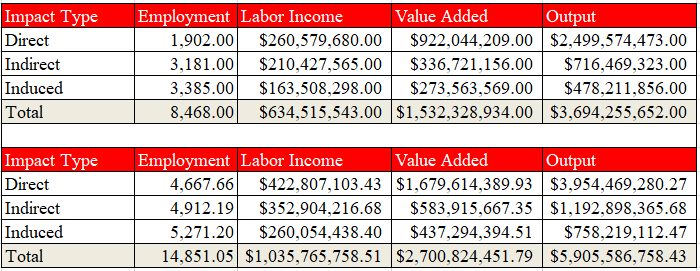Updating Prosperity: New Data Show Benefits of Non-Ferrous Mining Could Be Even Bigger, If We Don’t Screw It Up
Last summer, Center of the American Experiment released a study entitled Unearthing Prosperity, How Environmentally Responsible Mining Will Boost Minnesota’s Economy, which found that developing Minnesota’s copper, nickel, platinum, and titanium deposits would add $3.7 billion to Minnesota’s economy each year and support 8,500 new jobs.
Today, Earth Day, is the perfect time to share the news that new data indicate the economic benefits of developing Minnesota’s mineral resources would be much larger.
When American Experiment released our mining report last year, we were careful to use the most conservative estimates of Minnesota’s mineral wealth which were based on publicly available data that meets the strict standards for resource estimates set by the Canadian stock exchange.
Since that time, new information has become available that shows expanded non-ferrous mining in our state would create up to 4,667 direct jobs in the mining industry, which pay an average of $80,000 per year, support 4,912 indirect jobs, and 5,271 induces jobs, for a total of 14,851 jobs, and boost Minnesota’s GDP by $5.9 billion each year, according to the economic modeling software IMPLAN, the industry standard software for economists.

These numbers are preliminary, and it is likely the number of direct mining jobs will be revised downward as specific mining plans are brought forth in the future, but the massive opportunity that environmentally responsible mining brings to our state is undeniable. With the PolyMet mine recently becoming fully permitted, it seems Minnesota could be on the verge of an economic boom, if we are smart about facilitating an inviting business environment.
The outlook for Minnesota’s mining industry is not all rosy, unfortunately. Mines use an enormous amount of electricity. In fact Minnesota’s iron mines and paper mills used 8 percent of the all the electricity generated in the state in 2016, and the policies that have been proposed by Governor Walz and the Minnesota House of Representatives to increase our reliance on wind and solar would dramatically increase the cost of electricity.
According to the latest study released by American Experiment, obtaining just 50 percent of our electricity from renewable energy would increase electricity prices by 40 percent, which equates to an extra cost of nearly $200 million every year for iron mines and paper mills. Because Minnesota’s iron mines produce just 2 percent of the global output, such an increase in costs could threaten their viability in a globally competitive marketplace.
As such, rising electricity prices would erode the livelihoods of the approximately 5,300 people who already work in the state’s taconite industry, which contributes approximately $3 billion to Minnesota’s GDP. In total, energy policies that put Minnesota miners at a competitive disadvantage threaten to destroy more than 20,000 potential jobs supported by the ferrous and non-ferrous mining industry, and reduce Minnesota’s GDP by approximately $9 billion per year.
Most Minnesotans simply do not realize our state mines 75 percent of the iron produced in the United States, and that the earth underneath our feet contains the largest undeveloped deposits of copper, nickel, cobalt, platinum, and palladium deposits in the world. Furthermore, Minnesota’s titanium deposits are the largest in North America.
What better day to remind Minnesotans of the opportunities of mining than Earth Day?